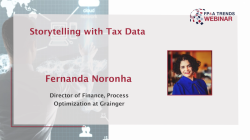In this article, FP&A professionals discover how soundtracking — the art of blending data, storytelling, and strategic insight — can amplify business impact and turn finance into the guiding rhythm of organisational strategy.
In this article, learn how FP&A teams can maintain focus throughout the year by combining marginal analysis, repetition, and balanced data interpretation to drive smarter, forward-looking decisions.







